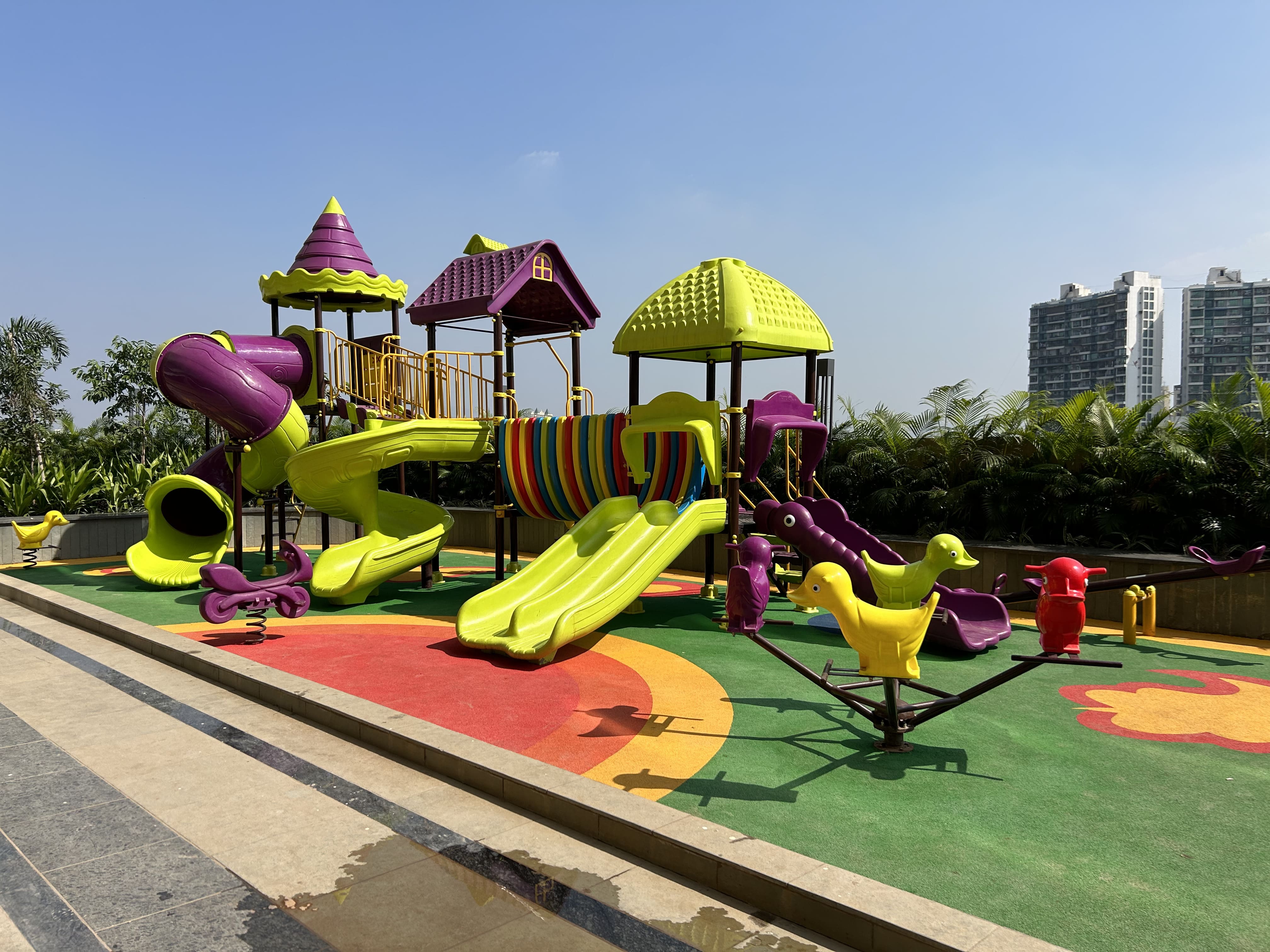Why Material Matters More Than You Think
For playgrounds, beauty is only skin-deep—what lies underneath
defines longevity, safety, and cost-efficiency. Choosing the right
materials can mean the difference between a playground that lasts
a season and one that thrives for a decade.
Whether you're designing for a school, township, or public park,
durability impacts ROI, user experience, and compliance.
1. High-Density Polyethylene (HDPE)
- ✅ Weather-resistant, UV-stable, and splinter-free
- ✅ Easily molded into bright panels and themed shapes
- ✅ Great for storytelling and themed play zones
Used in: Phula, Paper Boat
Perfect for areas with intense sun exposure or where low
maintenance is key.
2. Galvanized or Powder-Coated Steel
- ✅ Structural backbone of most modular playgrounds
- ✅ Withstands extreme weight and weather
- ✅ Requires anti-corrosion finishes for longevity
Used in: Bellatrix – designed to handle heavy
footfall in high-traffic urban setups.
Ideal for metro parks, public schools, and gated community
playgrounds.

3. Rotomolded Plastic (LLDPE)
-
✅ Lightweight and molded into curvy, slide-friendly forms
- ✅ Shock-absorbent and non-toxic
-
✅ Slightly more flexible than HDPE, great for tunnels and
slides
Use it in structures where children climb, crawl, or slide.
4. Recycled & Eco-Friendly Materials
- ✅ Great for projects pursuing green certifications
- ✅ Often made from post-consumer plastic
-
✅ Slightly more costly upfront but improves brand perception
Used in: Toucan – part of FunPlay’s Organic Play
series that aligns design with sustainability.
5. Fasteners, Footings & Anchors
It’s not just about the visible components—inspect the backbone:
- Zinc-coated nuts & bolts to avoid rust
- Anti-tamper fixings for public spaces
- Concrete/steel footings for soft soil regions
Always request a spec sheet before finalizing.
6. Surfacing Materials
-
✅ Rubber tiles – for high-impact areas (near slides/swings)
- ✅ Artificial turf – adds aesthetics and softness
-
✅ Engineered wood fiber – cost-effective but needs periodic
refills
- ✅ Sand pits – for sensory play, requires daily upkeep
Combine materials based on zones. Rubber for fall zones; turf or
tiles for walkways.
7. Climate-Responsive Choices
-
For humid, coastal, or high-altitude zones: Use galvanized base
frames
- Avoid wood unless pressure-treated or composite
- Use UV-stabilized HDPE or LLDPE in sunny states
India’s climate diversity demands climate-appropriate material
planning.
8. Maintenance Factors
- ✅ Can panels be replaced individually?
- ✅ Is the paint finish outdoor-grade or indoor spec?
-
✅ Are moving parts (e.g., swings) lubricated and shielded?
Pro tip: FunPlay systems are designed with
modularity in mind—most components can be replaced without
dismantling the full setup.
9. Safety & Certification
- BIS compliance documents
- EN1176 or ASTM certification for international projects
- Fire-retardant specs if near kitchens or canteens
FunPlay materials undergo third-party testing for strength,
toxicity, and weathering.
10. Aesthetics + Durability = Win-Win
- Rich color palettes that last
- Unique shapes for storytelling
- Textures that mimic wood, rock, or leaves
Choose a material partner who values both design and durability.
Which playground material lasts the longest?
Galvanized steel with powder-coating typically offers the
longest lifespan, especially when paired with HDPE panels.
Are recycled materials safe for kids?
Yes, if they’re certified and processed by a reputed
manufacturer. Always ask for toxicity and safety compliance.
What material should I use in coastal cities?
Go for galvanized steel frames, marine-grade fasteners, and
UV-resistant HDPE or LLDPE to combat rust and fading.
